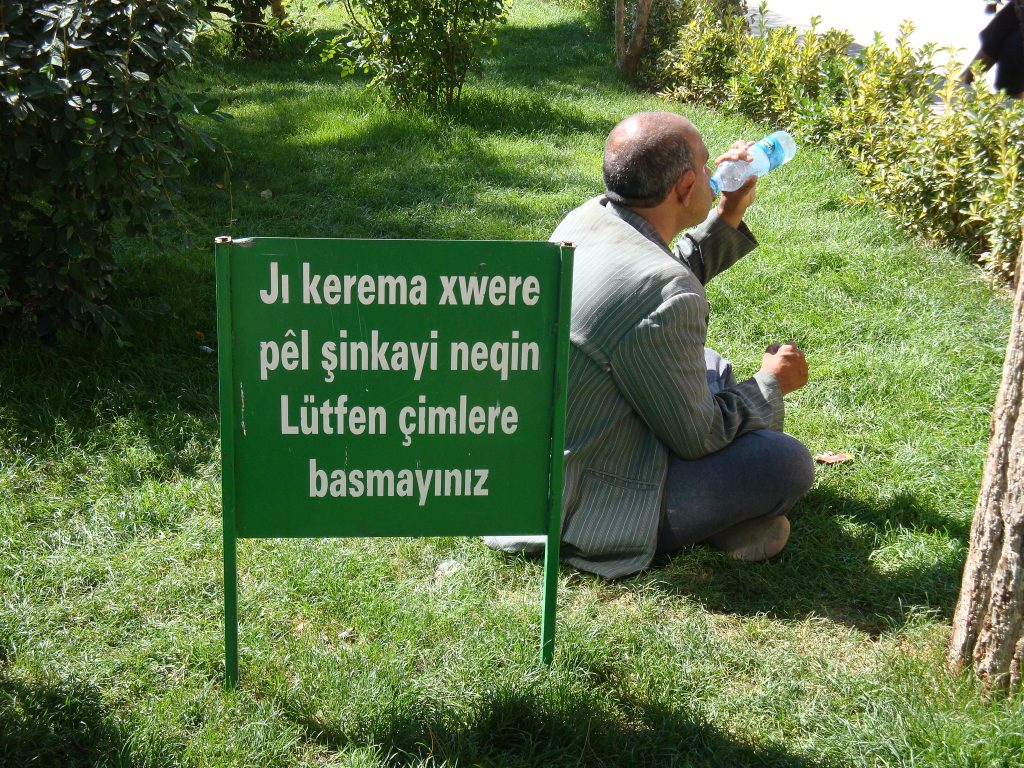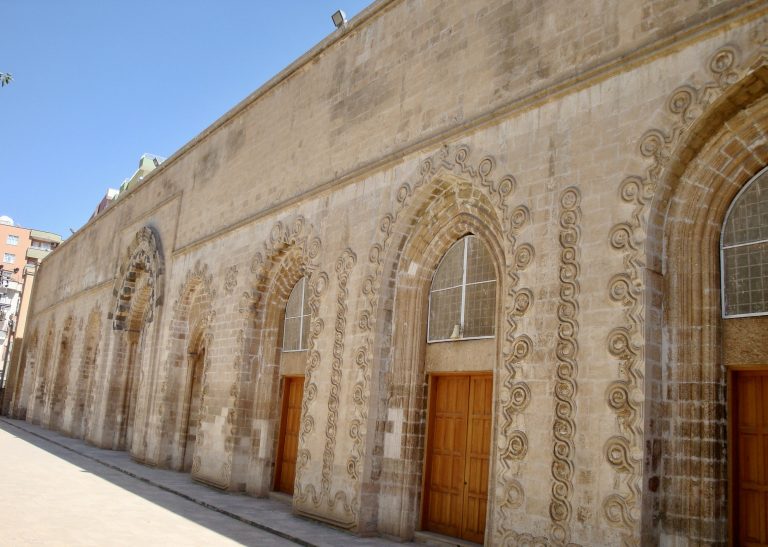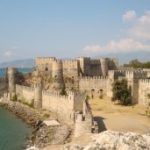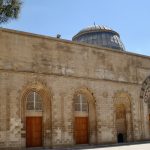It was just before last year’s election when I decided to head out to southeast Turkey. As on previous occasions it was obvious that there might be heightened tension there in the run-up to the poll. Came an email from a friend living out Urfa way. It’s tense in Diyarbakır, Midyat and Batman, she wrote. And don’t go to Kızıltepe – not that you’d want to anyway.
Now here was the thing. I was very specifically intending to go to Kızıltepe where I’d set my heart on visiting an Artukid-era Ulu Cami dating back to 1200-1204. Its design was said to be unique. It was only a hop and a skip from Mardin. It would be absurd to travel all the way out there and not take a look at it. In the end I decided to play it by ear. I’d dip my toe in the water in Diyarbakır. Then I’d try again in Mardin. If all seemed fine in those two places then I’d certainly be heading out to Kızıltepe.
Of course nothing remotely scary happened in either place and so I roamed around new Mardin until I eventually found the stop for buses to Kızıltepe. But why were people anticipating problems there so specifically? Well, when many Kurds left their villages for the safety of the towns in the 1980s Mardin was one of their first destinations. But Mardin’s population is basically of Arab descent and there are at least as many people speaking Arabic there as Kurdish. So over time many of them packed up again and moved further west, settling instead in Kızıltepe, which, today, is a solidly Kurdish town, hence the concerns about potential flashpoints before the vote.
It wasn’t much of a journey to Kızıltepe, nor was it much of a surprise to arrive and find it as much of a concrete jungle as so many other towns. It was not at all obvious to me where the Ulu Cami might be, and I’d already learned from a visit to Cizre that it didn’t always help to ask the locals, most of whom would be quite as clueless as me. In the end I found it in easy stages, drawing attention to myself by asking and asking again, until at last I found it tucked away behind a wall in the middle of an otherwise entirely modern suburb.
And, wouldn’t you know it, the blasted place was locked! In the courtyard three young men were hanging about looking shifty. None of them volunteered to go in search of the key and I was insufficiently confident about their intentions to risk approaching them. Instead, I’m sorry to have to admit that I glanced hastily around in search of possible escape routes, should it turn out that they were the thieving type of young men.
Those worries aside, the mosque was certainly a beauty and certainly a one-off too. A long, low Selçukish building, its wall was punctuated with doors, windows and niches, each of them framed with elaborate almost-but-not-quite-Mardin-style carving. There was something a touch Romanesque about those carvings too, although there was a jolliness in their loops and swoops that tends to be absent from the harsher chevrons and lozenges of Europe’s great medieval cathedrals.
I walked up and down the courtyard, I hung about the ablutions fountain, but there was absolutely no sign that anyone would be coming to unlock the door any time soon. Sadly, I wandered back outside again and strolled around the town until eventually I found what must constitute its centre which had been pedestrianised and given a grassy median strip. There my eye alighted with delight on a “Keep Off the Grass” sign in Kurdish and Turkish. No matter that a man was sitting on the grass right beside it, the thing that most struck me was that until just a year or so ago no such sign could conceivably have been erected. It was a small sign of how far Turkey had come along the path taken in my lifetime by Britain with the Welsh and Scots. Standing in front of that sign, I thought ruefully of the people who had killed and/or died to make it possible. Yet presumably within a few more years it will have become so much the new normal that it will be almost impossible to imagine that such tragedies were ever possible. Such is the absurdity of attempting to suppress the un-suppressible.
There were many jewellery shops around the median strip, all of them dripping with the kind of carroty-coloured gold favoured by Kurdish brides for their dowries. Then I spotted a bit of excitement. Fire had broken out in the top floor of a shop-cum-apartment block and a fire tender had arrived to put out the flames. The usual crowd had gathered to gawp and, not wanting to be thought a rubbernecker, I hurried past and came to rest in a small cafe, otherwise entirely filled with men who barely troubled me with a questioning glance.
There I let my mind run back over how the day had unfolded. Trouble in Kızıltepe? I’d racked up three shifty-looking young men doing nothing much more alarming than hanging about, one miscreant grass-sitter and a house fire. Otherwise, all had turned out to be as quiet on the Kızıltepe front as on the Mardin one.
Written: 26 January 2012 (Alas, since this was written there has been backsliding on the Kurdish language front. I’m not sure that sign would still be in place in Kızıltepe in 2024.)



